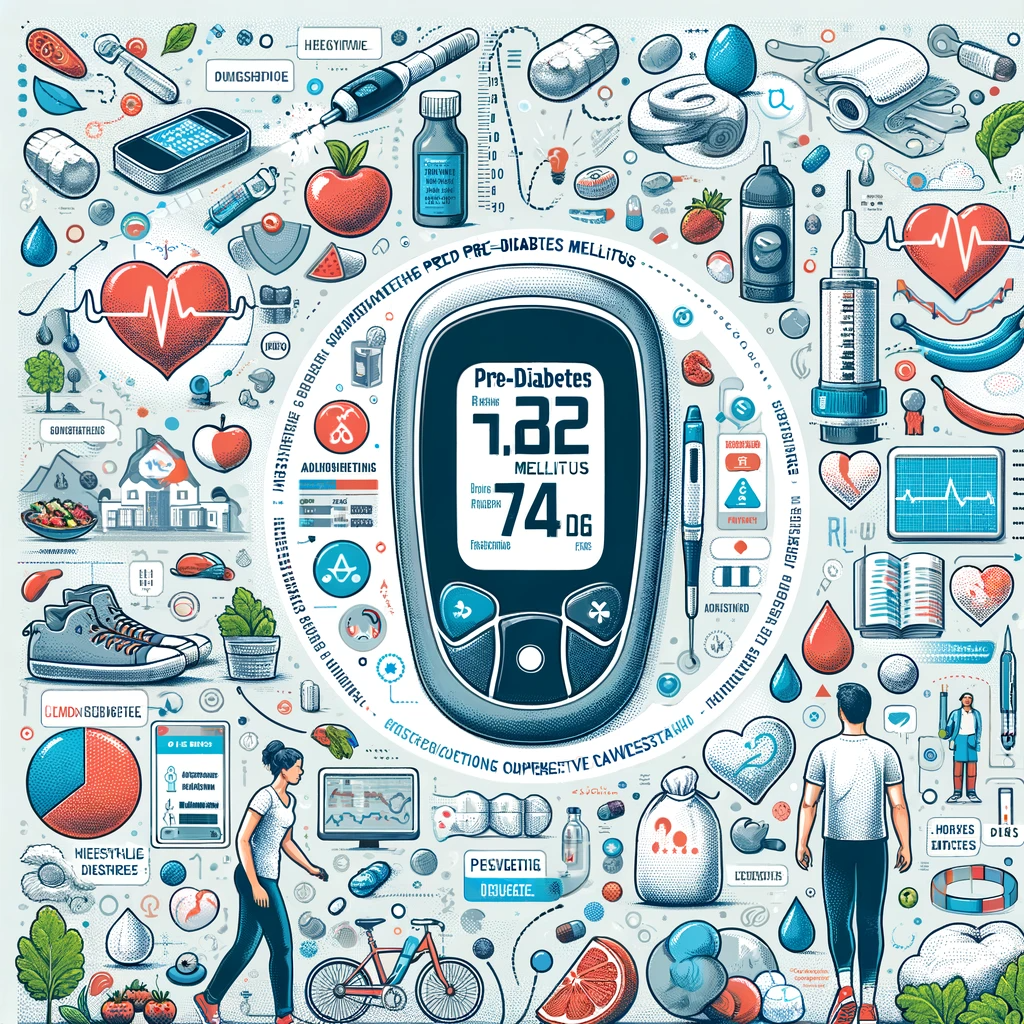Pre-diabetes mellitus is a health condition that has been gaining attention due to its increasing prevalence and the significant health risks it poses. It’s a critical stage in the development of diabetes, offering a window of opportunity for prevention. In this blog post, we’ll explore what pre-diabetes mellitus is, its causes, symptoms, and effective strategies for management and prevention.
What is Pre-Diabetes Mellitus?
Pre-diabetes mellitus is a metabolic condition characterized by higher than normal blood sugar levels, but not high enough to be classified as diabetes. It indicates impaired glucose tolerance or insulin resistance, meaning your body isn’t using insulin effectively. This stage is often considered a precursor to type 2 diabetes and increases the risk of other serious health issues like heart disease and stroke.
Causes and Risk Factors
Several factors contribute to the development of pre-diabetes mellitus. These include:
- Genetics: A family history of diabetes can increase your risk.
- Weight: Being overweight, especially with excess abdominal fat, significantly raises the risk.
- Age: The risk increases with age, particularly after 45 years.
- Sedentary Lifestyle: Lack of physical activity is a key contributor.
- Poor Diet: A diet high in processed foods, sugar, and unhealthy fats can lead to pre-diabetes.
Symptoms to Watch For
Pre-diabetes mellitus often has no clear symptoms, which is why many people are unaware they have it. However, some signs to be aware of include:
- Increased thirst
- Frequent urination
- Fatigue
- Blurred vision
Diagnosis
Pre-diabetes is typically diagnosed through one of the following blood tests:
- Fasting Plasma Glucose Test (FPG)
- Oral Glucose Tolerance Test (OGTT)
- Hemoglobin A1c Test
These tests measure your blood sugar levels and help determine if they’re within a pre-diabetic range.
Managing and Preventing Pre-Diabetes Mellitus
The good news is that pre-diabetes mellitus can often be reversed or managed effectively through lifestyle changes. Key strategies include:
- Healthy Eating: Focus on a balanced diet rich in fruits, vegetables, whole grains, and lean proteins. Limit processed foods and sugars.
- Regular Exercise: Aim for at least 150 minutes of moderate aerobic activity per week, like brisk walking, cycling, or swimming.
- Weight Management: Losing even a small amount of weight (5-10% of your body weight) can significantly reduce your risk.
- Regular Check-ups: Keep up with regular health screenings to monitor your blood sugar levels.
Conclusion
Pre-diabetes mellitus is a serious health condition, but it’s also a chance to make positive changes that can have a lasting impact on your overall health. By understanding the risks, recognizing the signs, and taking proactive steps towards a healthier lifestyle, you can effectively manage or even reverse pre-diabetes. Remember, the best approach is a combination of diet, exercise, and regular medical check-ups. If you suspect you might be at risk, consult with your healthcare provider for a proper diagnosis and personalized advice.


